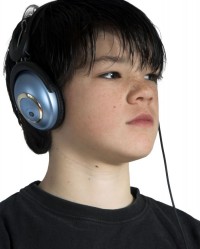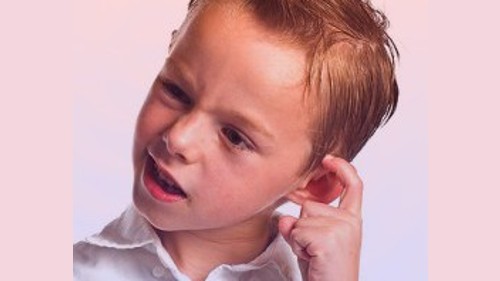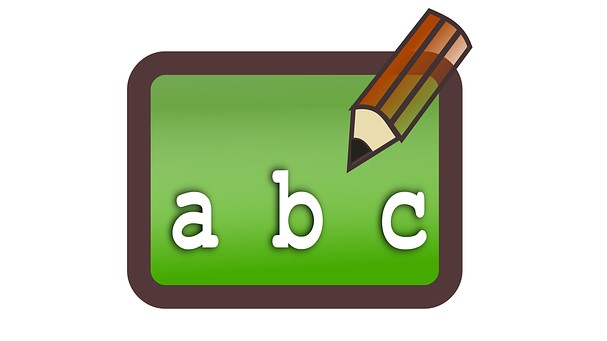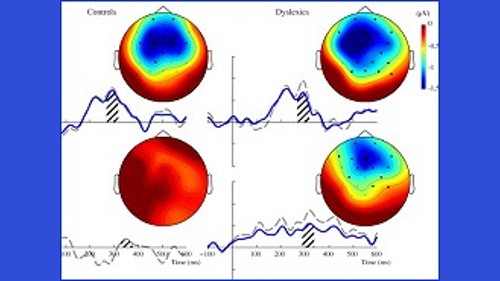Phonemic Awareness: A different take
Are dyslexic kids better at hearing the discrete sounds of language than others?
That assertion would fly in the face of common wisdom, but recent brain research suggests that dyslexia might be characterized by hyper-sensitivity to the nuances of the sounds of language. Rather than a problem distinguishing between discrete sounds, the problem might be that dyslexics have difficulty categorizing sounds.
First, a little background: Educators often say that the English language is composed of 44 distinct sounds. This is untrue. English has 44 phonemes, but as any linguist can tell you, some phonemes can have many different sounds. The different sounds of language are called allophones. A phoneme is a group of sounds that share the same significance in a language; the different sounds within that group are called allophones.
For example, think of the different way the letter T sounds in the words twin, tree, time, and cat. If you can’t hear the difference, try saying those words aloud and pay attention to what your tongue and lips are doing as you pronounce each word. A homeschooling mom once wrote to me, both puzzled and dismayed because her dyslexic son had written the word “tree” as beginning with “ch” — she thought the situation was hopeless. I pointed out to her that in that word, “t” actually does have a sound quality that is very similar to “ch”..
So allophones are the actual sounds we naturally make as we speak. Phonemes are an abstract concept, important because a written alphabet is used to to represent categories of closely related sounds.
Scientists who studied brain wave patterns of dyslexic subjects, as compared to controls, found a different pattern of brain waves when listening to speech. The dyslexic brain wave pattern suggested that they were “over-sampling” the sounds of language, ” at time scales and frequencies outside the range of usefulness for distinguishing speech sounds.
Here’s how one researcher put it:
In fact, oversampling might lead to dyslexics placing undue importance on differing speech sounds within a phonemic category. Categorical perception of speech – the grouping together of acoustic tokens that do not cross certain acoustical boundaries – results in sound variations within a category being poorly discriminated by typical readers because they are identified as a single meaningful speech sound instead. In persons with dyslexia, discrimination of within-category acoustic contrasts is actually superior to controls, possibly leading to confusion in phoneme-to-grapheme mapping. (Krause)
Or, explained in a different way:
Categorical perception develops from the predispositions of newborns for discriminating all potential phoneme categories in the world’s languages. Predispositions that are not relevant for phoneme perception in the ambient language are usually deactivated during early childhood. However, the current study shows that dyslexic children maintain a higher sensitivity to phonemic distinctions irrelevant in their linguistic environment. This suggests that dyslexic children use an allophonic mode of speech perception that, although without straightforward consequences for oral communication, has obvious implications for the acquisition of alphabetic writing. (Serniclaes 2004)
This particular theory goes a long way to explaining why many teachers and therapists may be on the wrong track in the way they try to teach phonemic awareness to dyslexic kids. A kid who hears a subtle “tch” sound in tree is naturally going to experience confusion — and the teacher who fails to recognize and address the fact that the soft /t/ sound in tree is not the same as the more explosive /t/ in time or the sharp sound at the end of cat won’t be able to counter the confusion that the child feels when expected to assign letters to sounds.
Of course, it may be equally frustrating for the teacher, equipped with a brain that is insensitive to these nuances. To the teacher, that T is always a T; to the child, it may be very difficult to sort this all out.
Update: These findings have been replicated in more recent studies. In 2018, French researchers reported that “a majority of the children affected with dyslexia display allophonic perception. ” They observed, “perceiving more sounds than there are letters to represent them (featural allophony) and perceiving extra sounds between two successive letters (segmental allophony) should raise serious difficulties in capturing the regularities that govern a writing system.” (Serniclaes 2018)
Citations:
Kraus, Nina. Atypical brain oscillations: a biological basis or dyslexia? Trends in Cognitive Sciences. Vol. 16, Issue 1, pages 12-13. December 2011.
Serniclaes W, Seck M. Enhanced Sensitivity to Subphonemic Segments in Dyslexia: A New Instance of Allophonic Perception. Brain Science, 8(4), 54. March 2018.
Serniclaes W, Van Heghe S, Mousty P, Carré R, Sprenger-Charolles L. Allophonic mode of speech perception in dyslexia. Journal of Experimental Child Psychology. Vol. 87, Issue 4, pages 336-61. April 2004.
Related Post: Allophonic Processing & Dyslexia – A Research Update
This article was originally published on October 10, 2012, and updated with new information on May 26, 2019.











Hi Abigail,
Thank you so much for producing this fabulous blog. I know that this piece is almost a year old, but I found it so helpful. The other day my daughter spelled the word “triangle” as “chriangel”. I had to ask her to tell me what the word was, only to realize that she had transcribed the phonetic sound better than I would be able to do! Like the “tree” example in this article. My first thought was, wow, she has a better ear than I do! And a clearer idea of how to communicate what she hears. Thanks for posting this!
Cynthia
Understanding CAPD
Most children develop the processing skills needed for reading and learning through language interaction. However, some do not, and since schools do not address these delays, auditory processing difficulties linger as an ongoing impediment to their learning success.
Central auditory processing disorder, which affects 17-20% of children, is a disconnect between how sounds are heard and how they are processed.
Auditory processing determines language mastery, which impacts:
Learning — listening accuracy and comprehension
Reading — a language skill
Social interaction
Thinking — internal dialog uses language